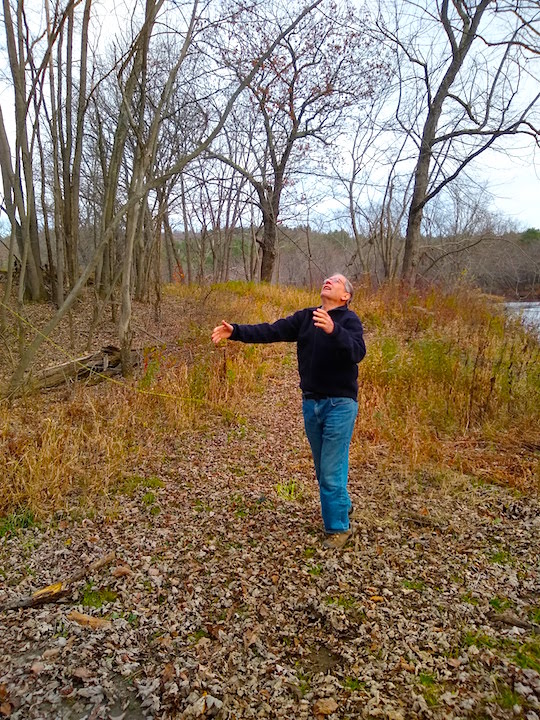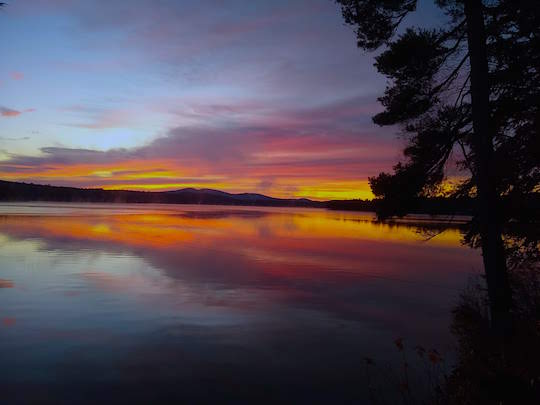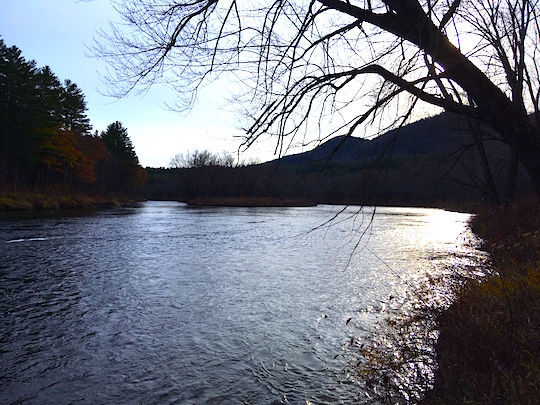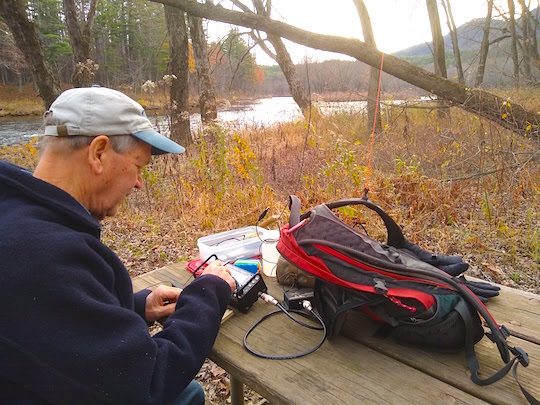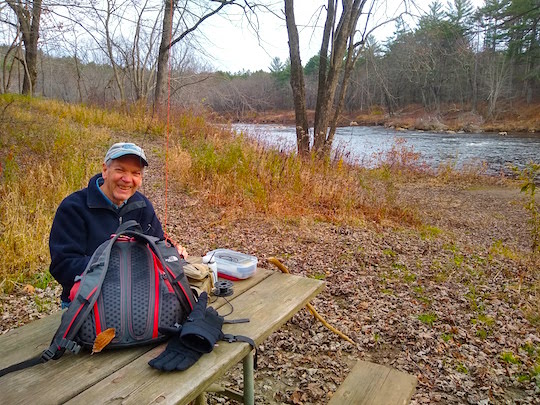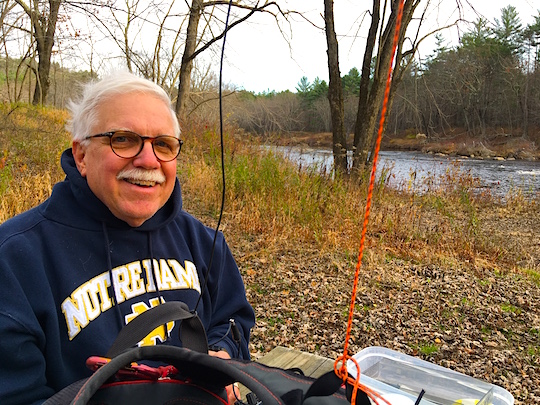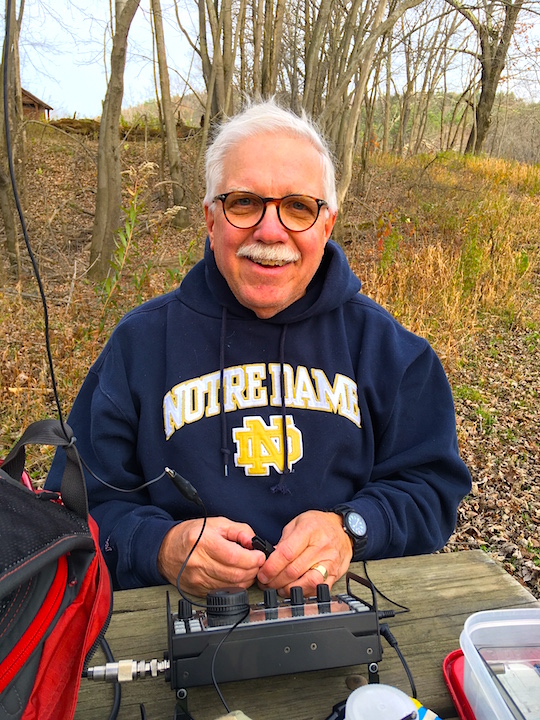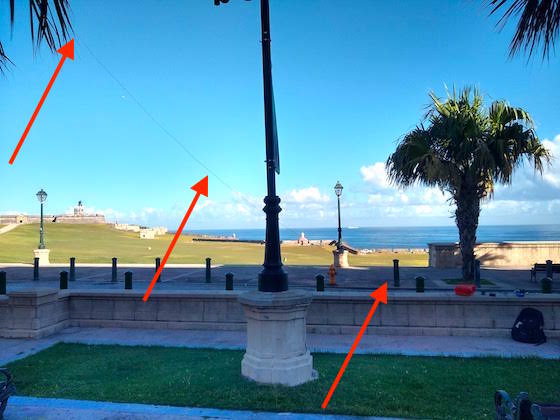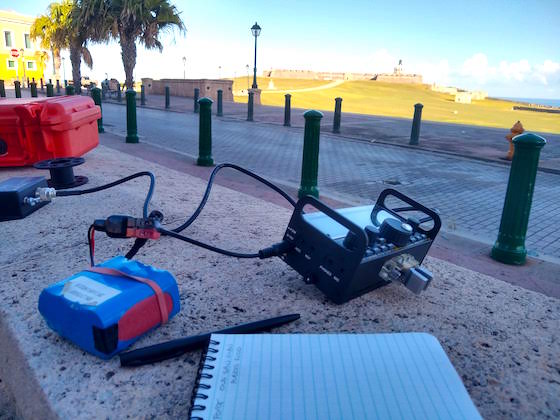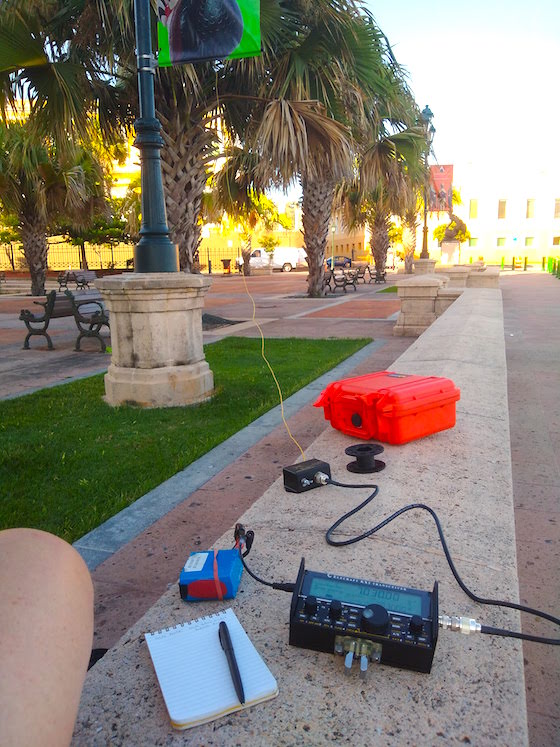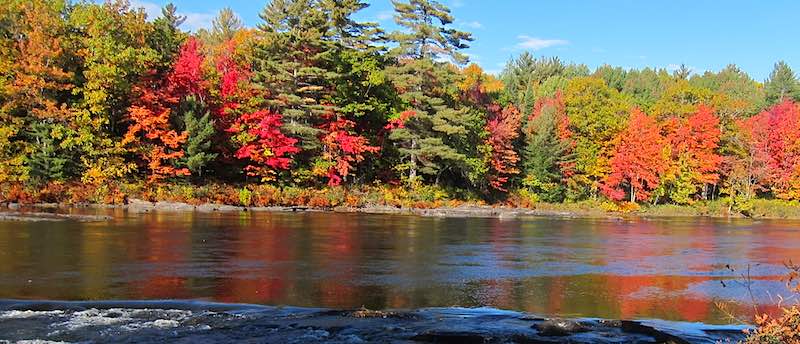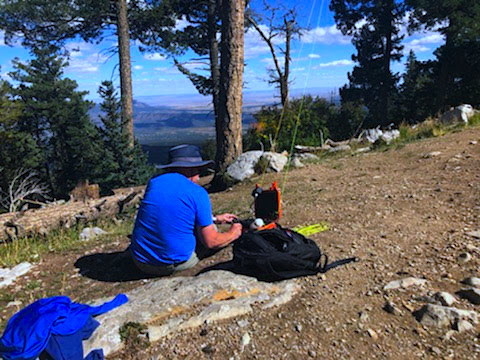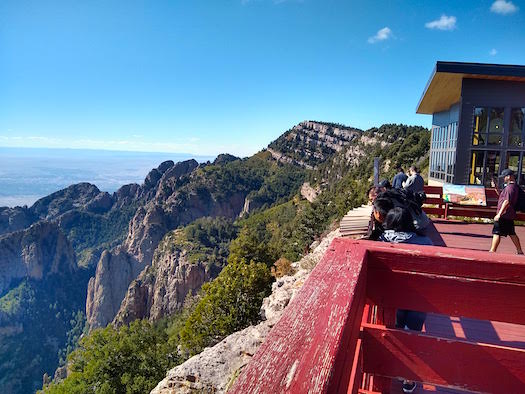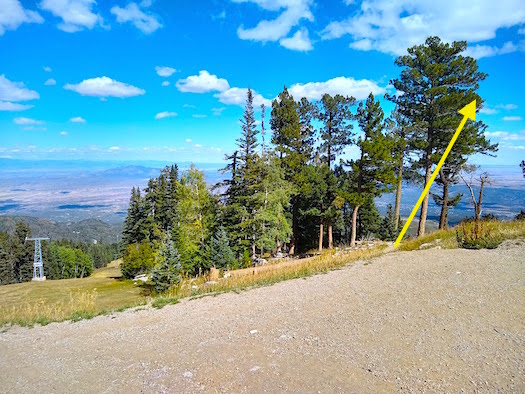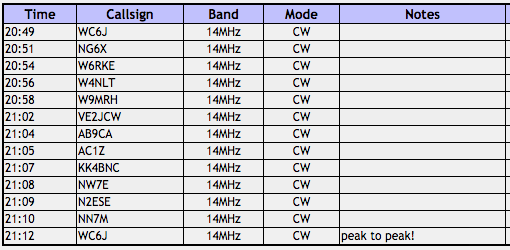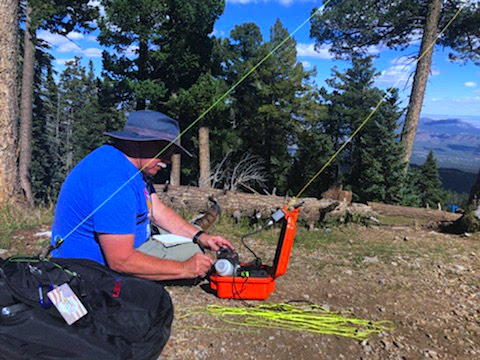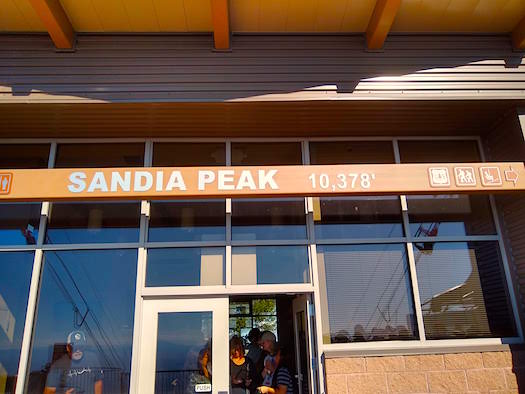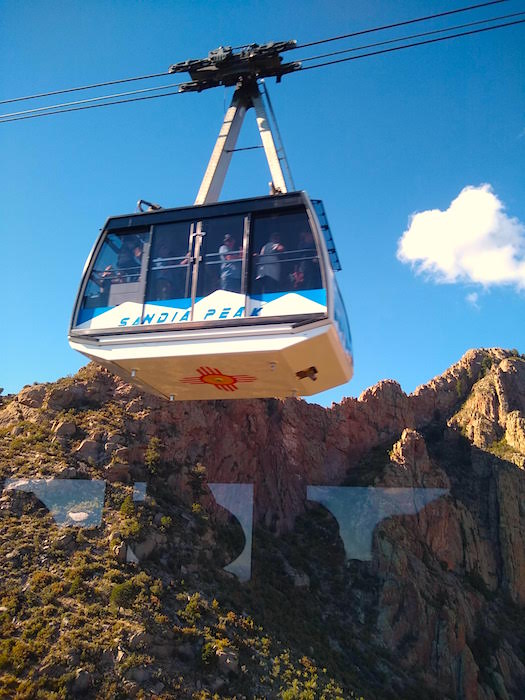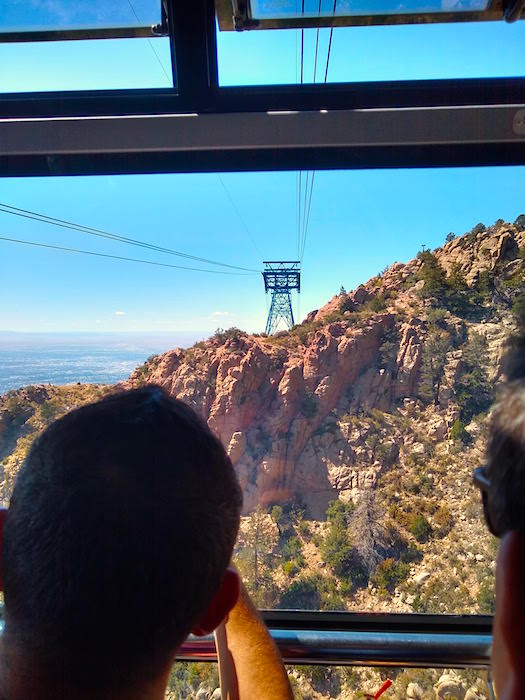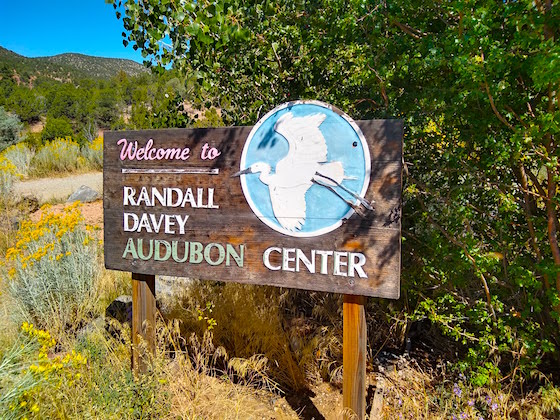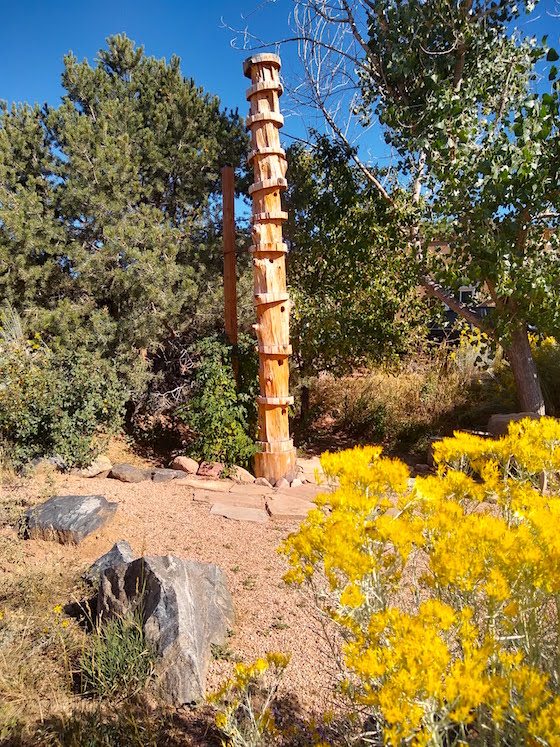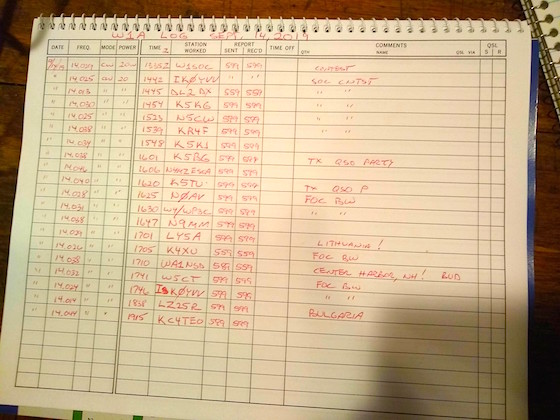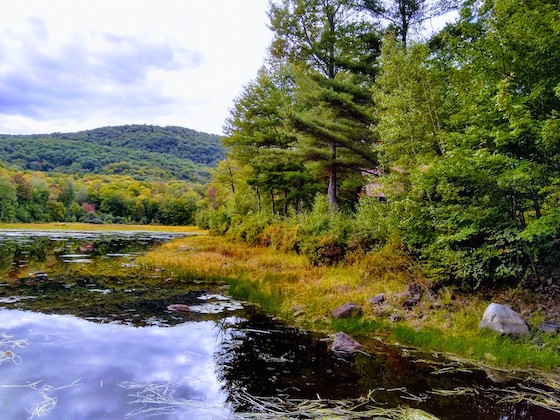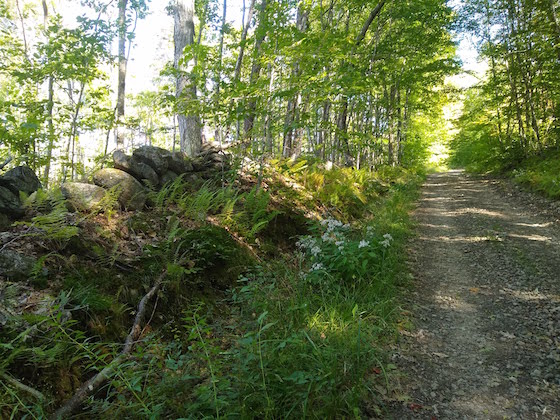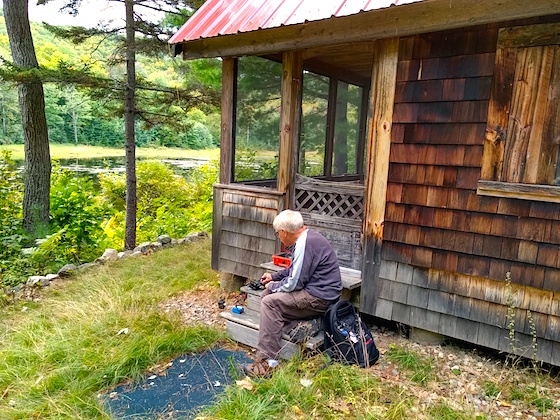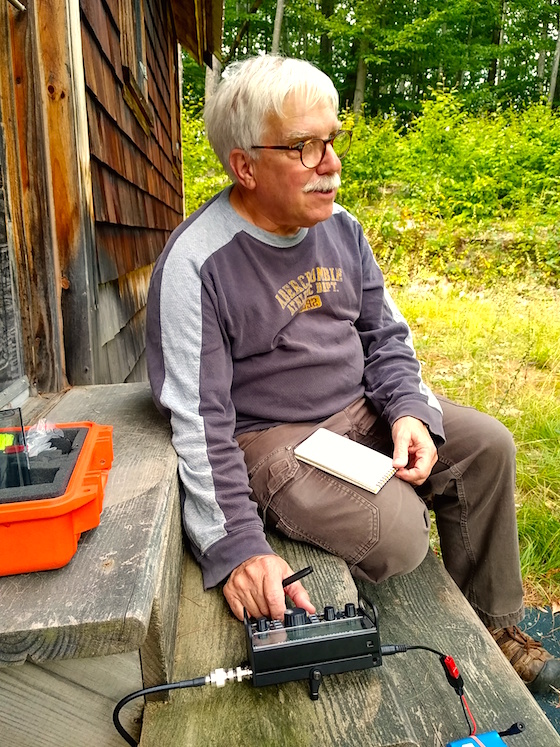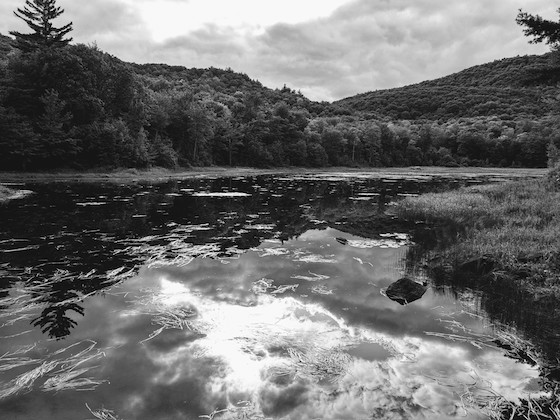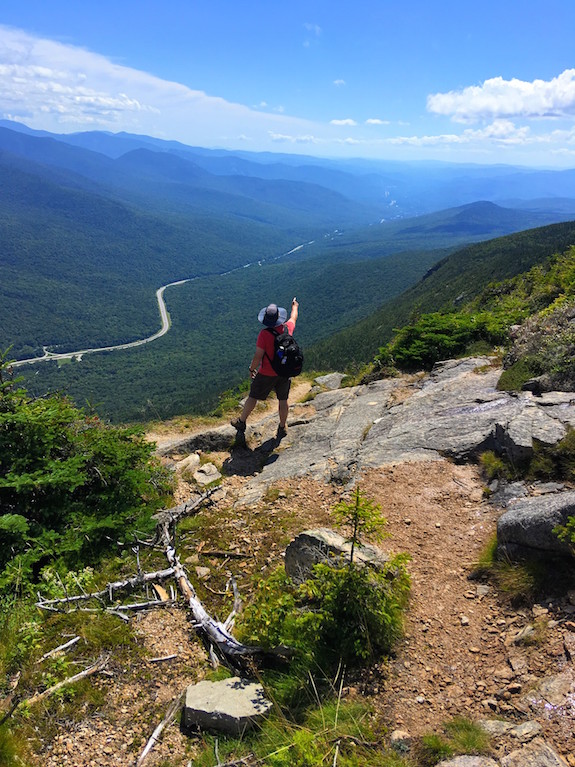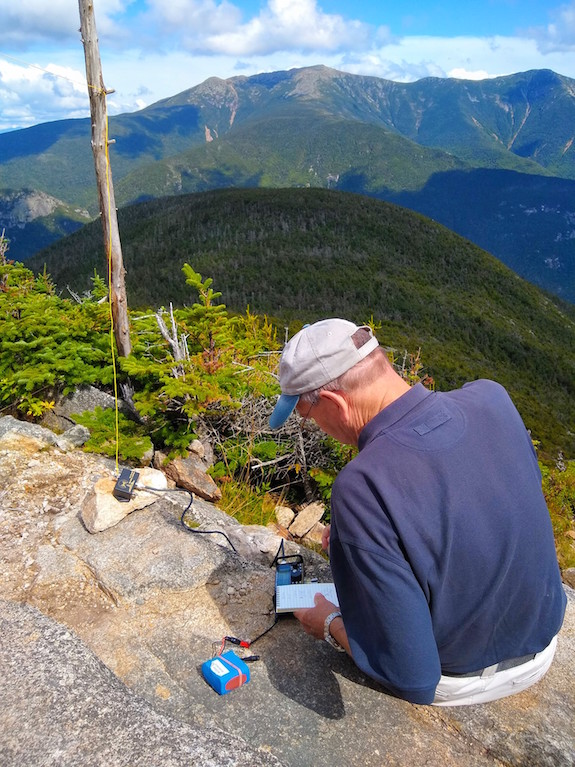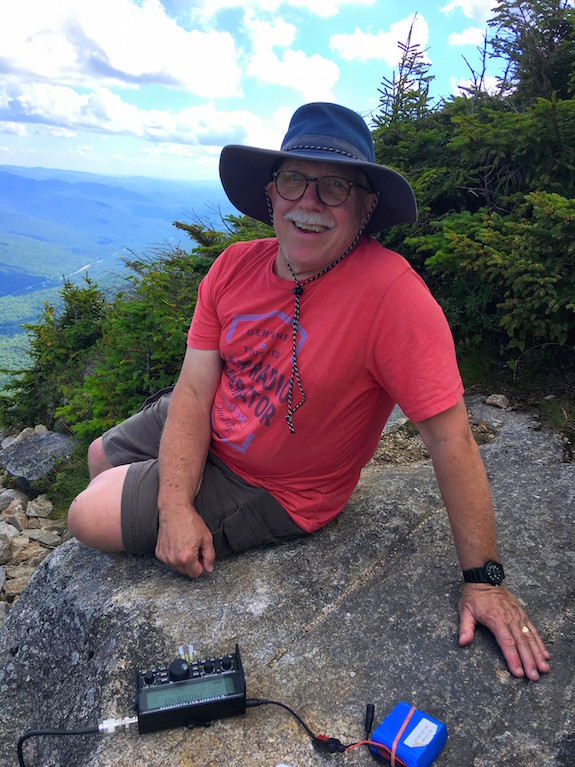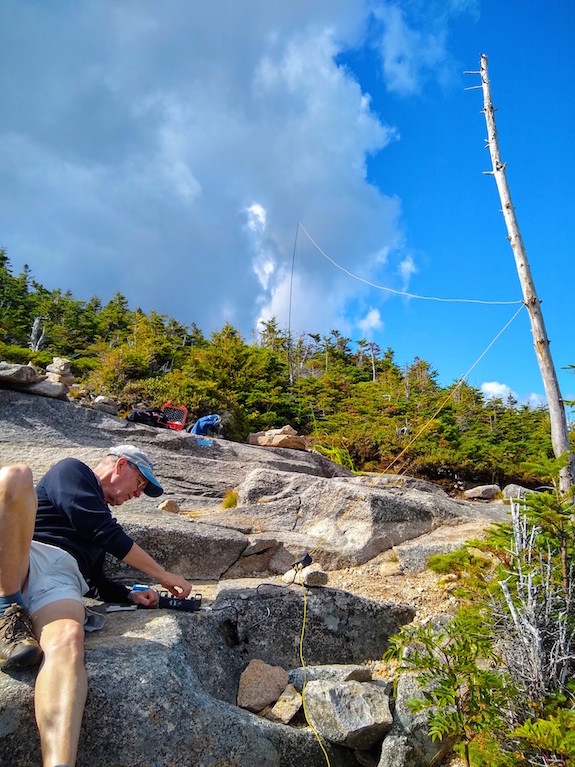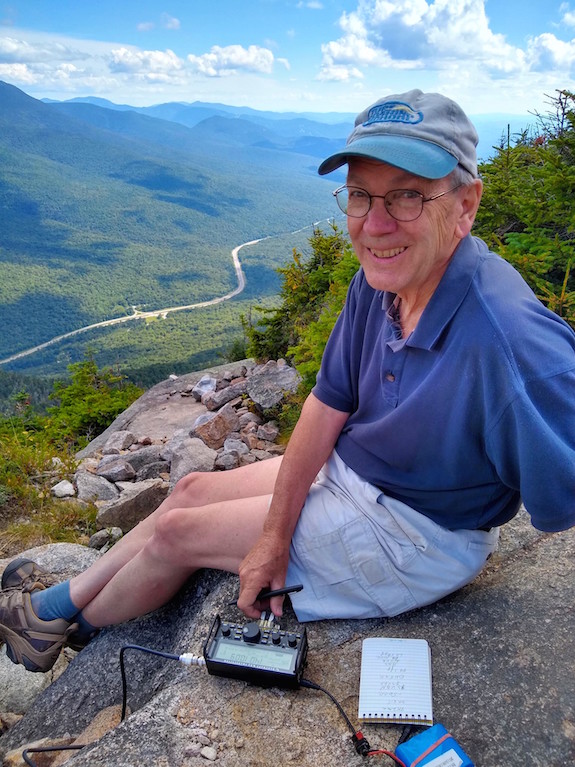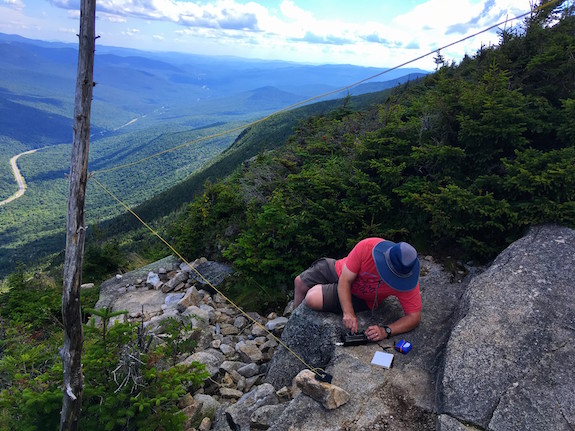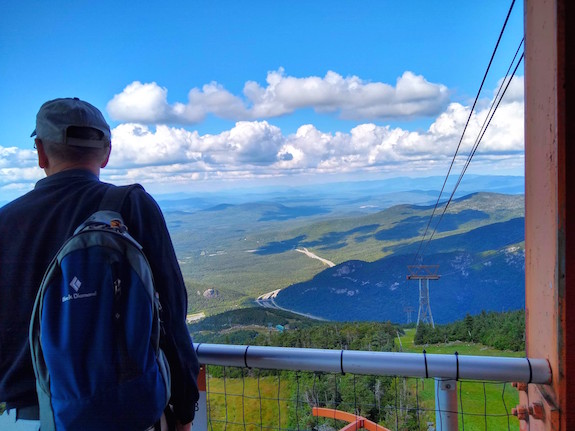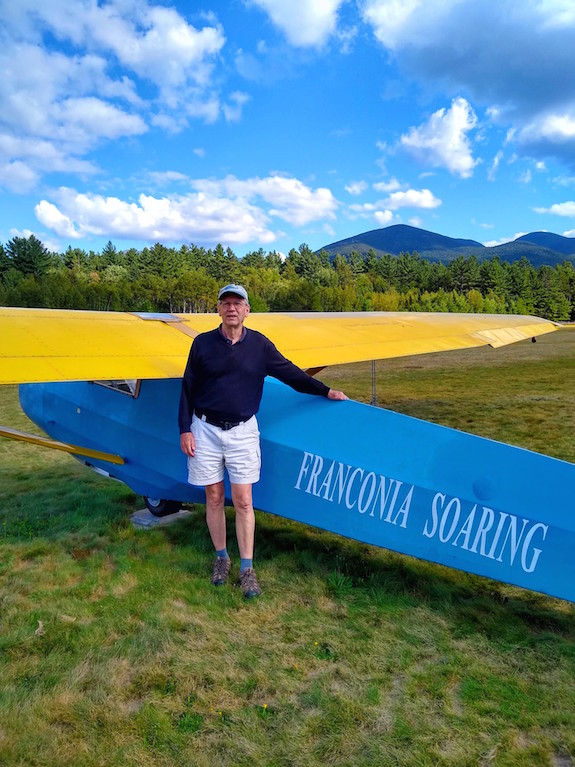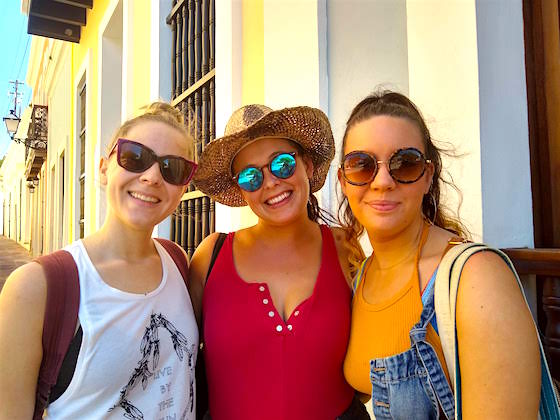
When it’s time to go on an adventure to discover hidden prizes, you better have an adventure hat on! Left to right: Jessie, Sarah, Kelly
AUTHOR’S NOTE: This is a story about doing outdoor radio at the El Yunque National Rain Forest in Puerto Rico, but the radio operation was a tiny part of the overall experience. It’s my hope you savor the story and are lucky enough to walk away with prizes like I did.
“Where are your adventure hats? I see your Dad is prepared with his sporty wide-brimmed blue adventure hat. How can you expect to have fun on an adventure without a hat? I had trouble myself selecting which hat to wear.”
Sarah was letting my daughter Kelly, and her good friend Jessie, know that they weren’t prepared for our imminent departure to the El Yunque National Forest just east southeast of San Juan, Puerto Rico.
“We didn’t get the memo!” replied my daughter Kelly in a slightly sassy but happy voice. Howls of laughter filled the lobby of the hotel as we made last-moment preparations to leave. We had to walk a quarter mile up Calle Del Cristo street to get to our parked rental car. Mila, another young woman who rounded out Kelly’s friends was to meet us at the parked car.
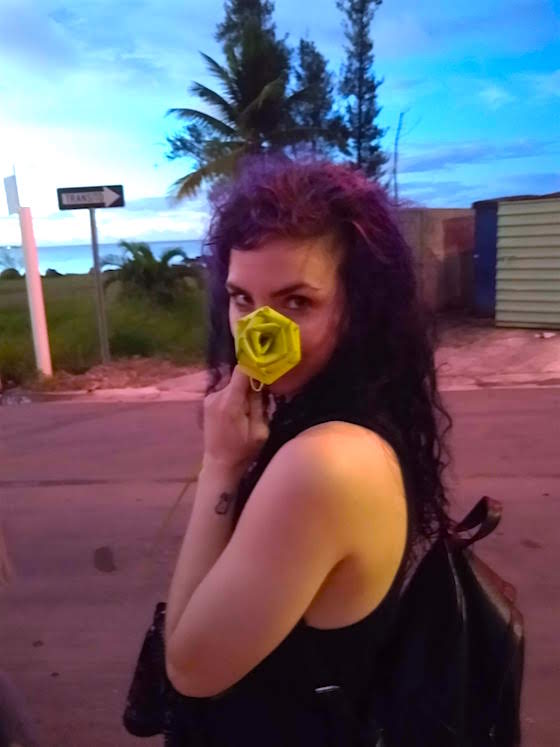
The mysterious Mila. Don’t underestimate her wit and spunk!
Because on-street parking is harder to find in Old San Juan than a sober person, the plan was for Mila to take over our parking space with her rough-and-tumble pickup truck the second we pulled out of it. We executed the plan perfectly, Mila jumped in the car and the happiness volume knob in the car was turned on full.
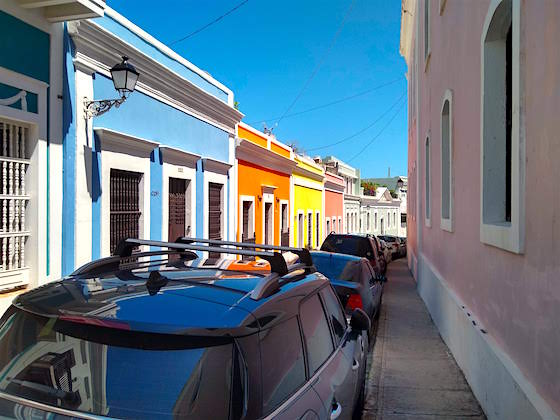
This is typical on-street parking in Old San Juan. Yes, believe it or not, there is a street on the OTHER side of the cars. You bet it’s narrow!
Four Young Chicks & One Old Goat
This was my last full day visiting my daughter Kelly who’s worked in Old San Juan for the past twenty months. She was conscripted to the island paradise with Jessie by Sarah who needed help running a boutique hotel after Hurricane Maria ravaged the island in September of 2017.
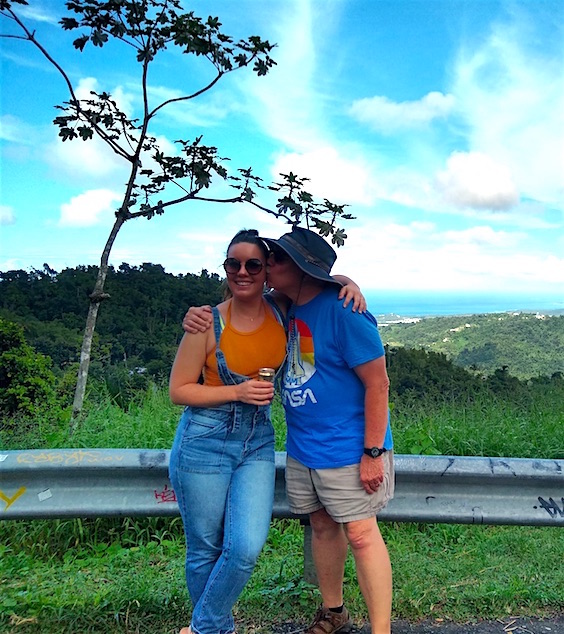
Here’s my Kelly. It’s hard for her to be so far away, but she’s got to chase her dreams. I get it!
Mila was working at the hotel and it didn’t take long for the four young women to become thick as Caribbean pirates. Their love for each other was as infectious as Yellow Fever as we made our way out of the fortress walls of Old San Juan to the closest gas station to get multiple six-packs of cute small cans of Medalla Light beer to quench the unending thirst the rain forest creates.
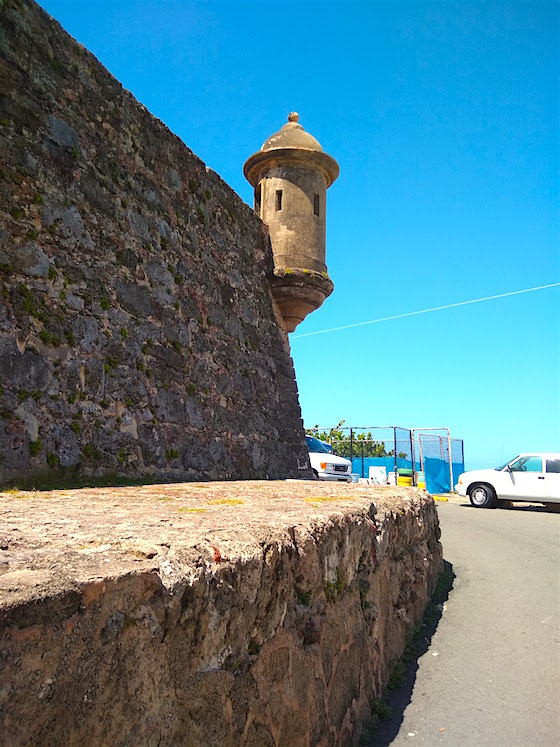
Walls taller than this surround most of Old San Juan. Think of the insane amount of labor it took to build them. No power tools or engines! Manpower and animals only.
Within minutes the day was dubbed Dad’s Day as Sarah had made it crystal clear four days earlier upon my arrival that I was to be her surrogate dad during the stay. “You’re the first parent to come visit any of us!” Thus this old goat now had four vivacious young daughters for the day.
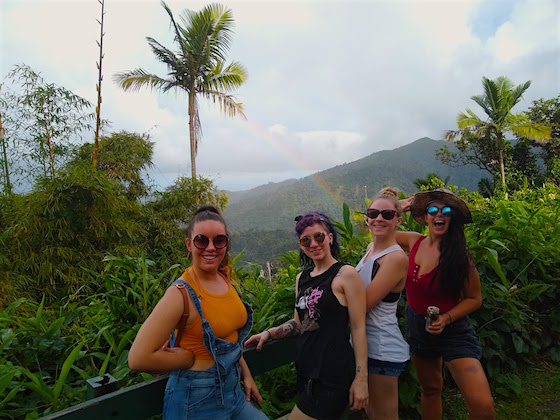
Look at the prizes at the end of the rainbow! How lucky was I to be with my daughter Kelly and my three surrogate daughters for the day. Left to right: Kelly, Mila, Jessie, Sarah
You didn’t have to be a rocket scientist to see right away that lots of lifetime memories were in store as we drove towards the El Yunque rain forest.
Puerto Rican Cuisine & Spirits
It’s important to realize my daughter and Mila are bartenders in Old San Juan. My daughter happens to work at El Batey, the oldest bar on the island. It has a rich history. I was surrounded by four young women who not only knew about drinks, they were experts at drinking. In the previous 72 hours I had consumed more liquid courage than I had in the previous ten years!

Here’s the center of the vortex of El Batey – the oldest bar in Old San Juan.
About forty minutes into the drive we pulled to the side of the road to grab some lunch at a typical roadside food stand. This one also served up drinks and it’s a good thing they did. Their supply of spirits prevented the stash of Medalla Light from dwindling down dangerously low.

Here are the four young lasses ordering lunch. Dad picked up the tab. Mila speaks fluent Puerto Rican Spanish being a native and made sure everything was perfect.
Outdoor seating is common and most roadside foot stands have both covered and uncovered seating. After all, you’re in a lush warm tropical climate. We all sat at a nice round table, drank, ate and talked about the upcoming visit to the rain forest. I stuck with water since I was the designated driver.
El Yunque Rain Forest
Soon we were back on the road and the rain forest was but 10 or 15 miles away. El Yunque is only about a one-hour drive from San Juan. As we started up the two-lane road into the mountains, I became aware of the dense jungle vegetation and the wet roads.
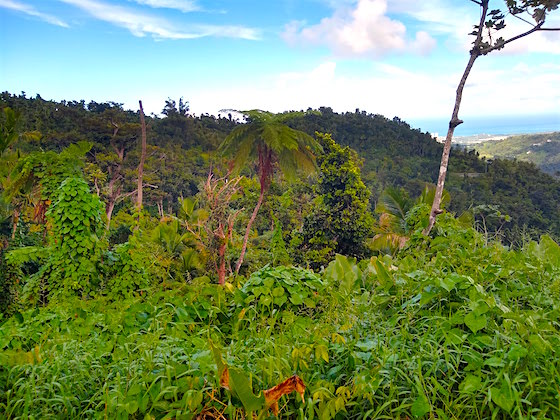
This is the typical vegetation you’re going to see at El Yunque. Beware of creatures of all types behind that green curtain. That’s not the type of prize to go after on an adventure like this.
“Dad, you need to toot the horn as you approach these blind turns,” Mila recommended from the backseat. Each of my surrogate daughters decided to call me Dad for the day.
Mila is a Puerto Rican native and shared with me that the traffic laws in Puerto Rico are for the most part recommendations. Tooting the horn no doubt helps prevent crashes from other drivers cutting the turn too short. I got pretty good at tooting quite fast!
I also became acutely aware of any number of late-model Jeep 4×4 rental vehicles. Each time I saw one, I looked to see if it had a Jurassic Park logo on the side doors. The rain forest was so dense I thought a velociraptor could pop out of the brush at any moment.
Listen closely enough and you could hear the frightful purring that velociraptors make. We captured it in this video:
Our first stop was a steep rock-wall waterfall. We parked in a small lot just above the waterfalls. A pop-up shelter was just 100 feet away and a young park ranger was sitting at a table under the shelter as we walked to the falls.

Here’s Sarah quite happy about being at El Yunque with her best buds and surrogate Dad I might add!
“Good afternoon! Are you going to drive up past the falls? I just wanted to let you know that I have to close and lock this gate at 6 pm. You have plenty of time to go farther up the road and swim at the waterfalls in Juan Diego Creek.” She said to just be sure to head back from the swimming hole no later than 5:45 PM.
Once at the waterfall just past the ranger, I noticed warning signs that flash floods could create a significant safety hazard as a downpour of rain just a half-mile away could transform the magical placid waterfall into a raging torrent in seconds.
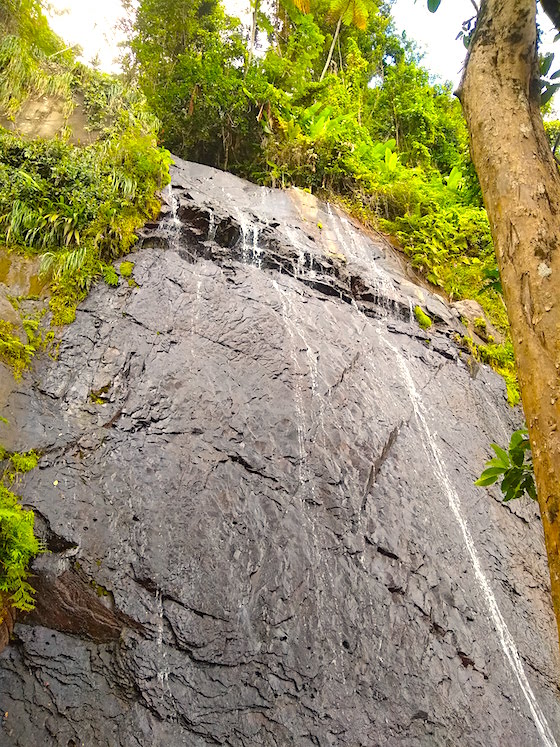
This placid waterfall can kill you in seconds if there’s a downpour just 1/4-mile from you. Don’t underestimate the danger here.
All of us made sure we climbed to the falls to touch the rock wall being washed by the water.
Low-Powered Amateur Radio
Just about one-half mile from the waterfalls was the Yokahu Tower. This ancient-looking 60+-foot-tall round turret tower was built in 1963. It’s just an observation tower that allows you to get a more panoramic view of the north and east. On a clear day, you absolutely can see the deep blue sea.
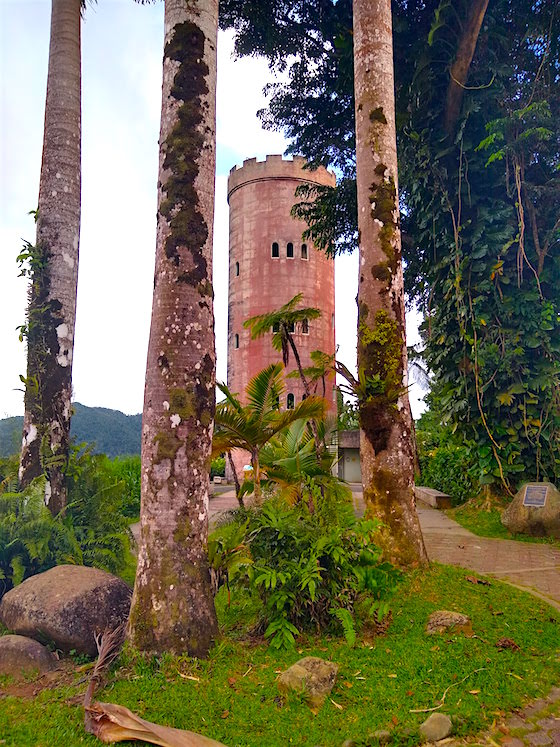
Here’s Yokahu Tower. Looking at it you might think it’s 200 years old. Wrong!
I decided to set up my Elecraft KX2 radio on a handy bench just below a magnificent tree that would support my 29-foot vertical wire antenna.
I employed the same technique to get my string up over a branch as I’ve always used. You can see how it’s done in this video that I recorded a month earlier in New Mexico.
While setting up my equipment, a small crowd was attracted to my string halyard and the antenna that dropped about 35 feet from the tree. As always, people want to know how in the world I lofted that string way up in the tree. I told them about the video I had just recorded.
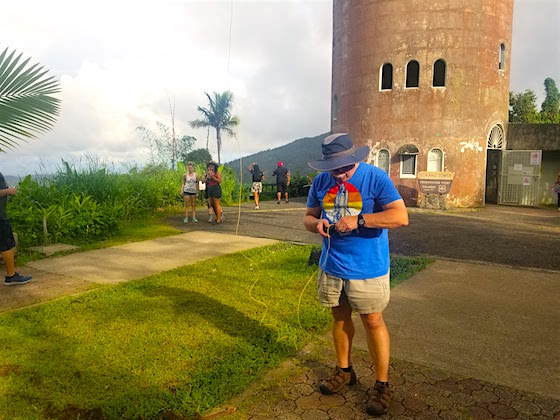
Here I am getting ready to deploy my 29-foot wire antenna.
Two of the tourists were Americans who are in the US Army. They were simply amazed at my tiny radio and the ability to communicate great distances using Morse code and a tiny BioennoPower 3 Ahr battery.
Sarah was kind enough to log for me and it didn’t take long to hear a few signals. I knew I didn’t have much time because it was now 4:00 PM and we still had to get to the Juan Diego Creek and hike a short distance to the falls. I had a feeling I was going to be conscripted to do a photoshoot of the four young women that were making my last full day in Puerto Rico extra special
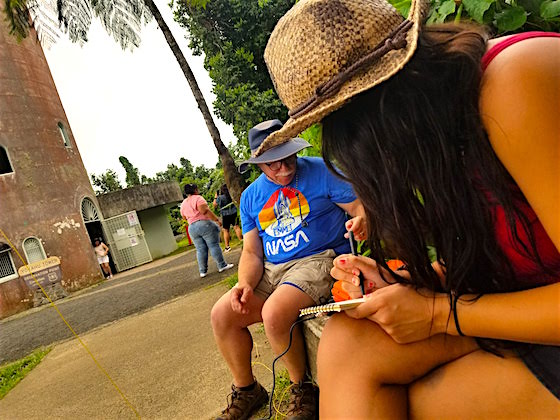
If you’re lucky enough to have a companion log for you, outdoor radio and adventures can be so much more fun. Sarah did a great job for her first time. Thanks, Sarah!
As I didn’t want to be trapped within the rain forest behind the sturdy iron gate, I decided to limit my time on the air to no more than 20 minutes. I had visions of becoming a tasty treat for one, or more, of the creatures that were undoubtedly lurking in the dense vegetation that surrounded us everywhere.
It’s important to realize that when I do outdoor radio it’s done with a small radio that has a quite weak signal compared to some home-based amateur radio stations that can transmit with hundreds of watts of power. My Elecraft KX2 is capable of 10 watts output, but normally I operate at 5 watts. That’s just about the amount of energy being output by a soft glowing nightlight.
Within a few minutes I heard a somewhat weak signal from Janusz, SP9JZT, who lives in Poland. We did a quick exchange and his signal report to me was 339 and I gave him the same report. We were on 30 meters as I couldn’t hear any activity on 20 meters.
Sarah must have gotten distracted because the next thing I knew my sweet daughter Kelly was logging for me. I decided to go back to 20 meters to see if anyone was there.
Lo and behold I heard PP7LP, Lucio down in Brazil! But alas, he couldn’t hear my low-powered signal. Such is the life of an outdoor radio operator!
Glancing at my analog wristwatch, it was time to pack up. Sarah, Jessie, Mila, and Kelly had been so patient and they helped me pack up so we could get to the swimming hole beneath the falls at San Diego Creek.
The Photo Shoot
The paved road into the rain forest that we traveled is a dead-end road. The trailhead to the waterfalls at Juan Diego Creek was just a few minutes away from the Yokahu Tower. I expected to have to hike ten minutes or so to get to the waterfall, but surprisingly it was only about a two-minute walk, if that.
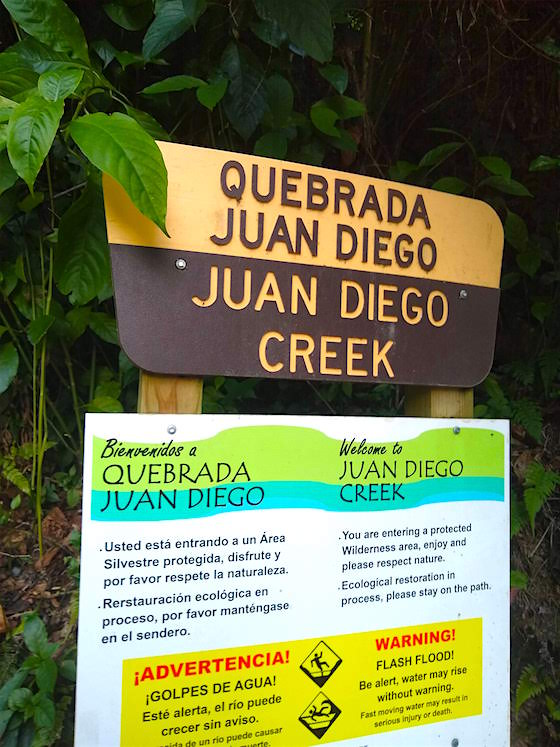
You’re at the trailhead of Juan Diego Creek.
It was very misty at the falls and the swimming hole was quite large. The water was only about 4 feet deep and it didn’t take long for the four young women to wander out into the water.
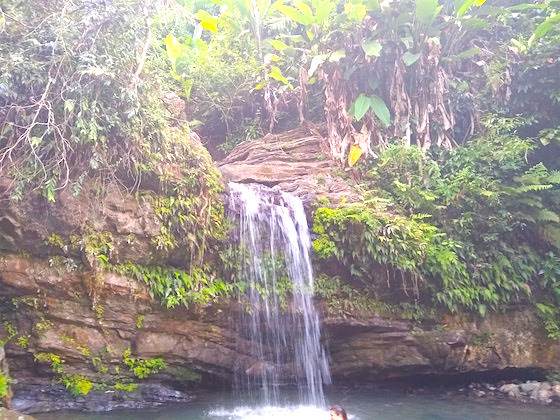
Here are the soothing Juan Diego Creek waterfalls.
“Dad, take my picture!” each one cried and soon I felt like a Sports Illustrated photographer as most of them struck goddess poses on the rocks adjacent to the falls. I was having as much fun as they were on this Dad’s day just capturing their happiness with electrons on my smartphone. They were enjoying the water and their day away from the hustle, bustle, and heat and humidity of Old San Juan.
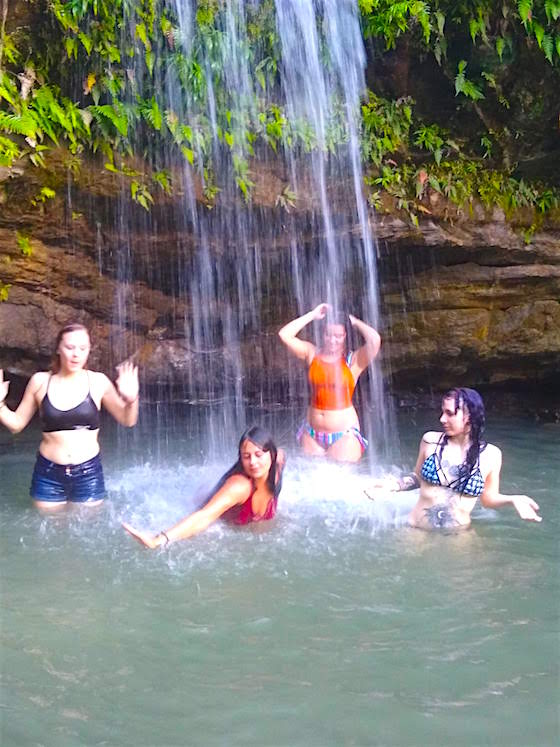
What a great time the girls, I mean young women, had! It’s a day I’ll never forget.
Before we knew it, it was 5:30 PM and time to head out of the jungle. All of them were dripping wet and the humidity of the rain forest would not allow them to dry out anytime soon.
As I drove the rental car down the serpentine roads with the blind corners I tooted the horn as I was taught by Mila earlier in the adventure. Several times the toots produced laughs from the wonderful girls.
“Don’t forget to stop at the one store so we can take photos.” I can’t remember which of the girls blurted it out, but the car erupted in laughter once again. Laughter was the theme of the day.

Happiness on steroids. Do you think these four young ladies are going to forget this day?
The tiny roadside store was closed by the time we arrived, but the painted plywood cutouts with the face holes were there for us to create more memories.
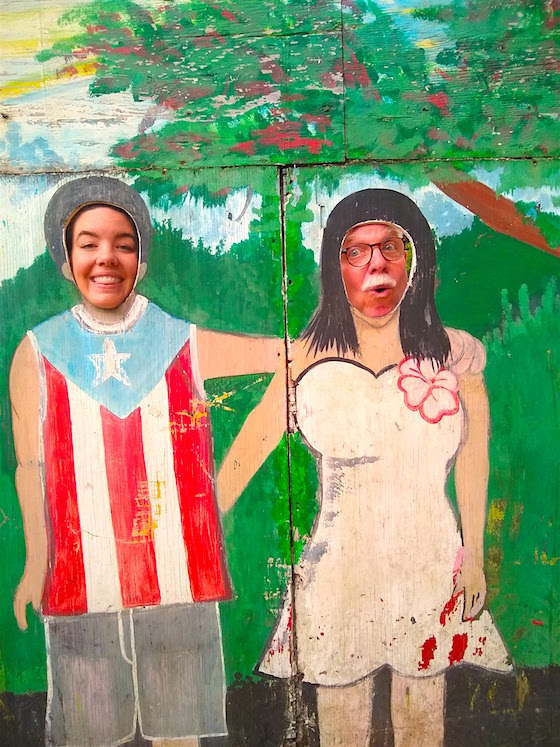
Kelly and me. I had no idea I was in this particular cutout. Oh my!
We took turns being different characters before deciding it was time to get going. The sun was low in the sky and soon it would be dark.
Once back on the main road we were blessed with a stunning sunset. Little did I know the happiness was just about to ratchet up as our next stop was a very unique mile-long strip of food joints and bars. Every imaginable Puerto Rican delicacy could be had here including the industrial-sized containers of liquid courage.

Yes, this is exactly what the sunset looked like. And yet another prize!
Within minutes a mojito that appeared to be in a small garbage can was placed in front of me. I was thirsty and it didn’t take long for me to make it disappear as the sun had 30 minutes earlier. All of a sudden it felt like a high-speed freight train was barreling around a bend in my head. Whoosh! I was three, no four, sheets to the wind!
We ate, drank, and toasted our never-to-forgotten adventure to El Yunque. The day was filled with too many prizes for me to count. I was blessed to spend a day with Kelly and her closest friends. I avoided the dreaded outdoor radio skunk. I got to visit a rain forest for the first time. I got to drink a mojito that would douse a forest fire. I could list several more, but I feel you get the point.

When you’ve not eaten in six hours, it’s probably not a good idea to drink a 32 oz mojito in 15 minutes.
I highly recommend going to this wonderful National Forest in Puerto Rico. Just don’t forget your adventure hat and take your soulmate if you can because El Yunque is a magical place indeed!

Look who got adventure hats at the end of the adventure! This is just before we ate dinner and I got wasted.

